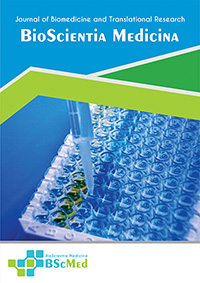Main Article Content
Abstract
Background: Inhalation injury accompanying severe burns is a major driver of morbidity and mortality. The pathophysiology of injury from volcanic eruptions—a unique combination of extreme heat, abrasive particulates, and corrosive gases—is distinct from typical combustion smoke and not well-characterized. Flexible bronchoscopy is the gold standard for diagnosing and grading airway injury, yet its application in this context, particularly in relation to external burn severity, is unclear.
Case presentation: We present a retrospective analysis of two climbers who were the sole survivors admitted to our tertiary center after exposure to the pyroclastic flow from the 2023 Mount Marapi eruption. A 19-year-old female with 40% Total Body Surface Area (TBSA) deep burns and a 20-year-old male with 30% TBSA deep burns both presented with signs concerning for inhalation injury. Despite the devastating extent of their cutaneous injuries, flexible bronchoscopy in both patients revealed only mild, Grade 1 endobronchial injury (mucosal erythema and edema) based on the Abbreviated Injury Score (AIS) classification. The first patient succumbed to septic shock from her burns, while the second patient showed significant respiratory improvement following therapeutic bronchial lavage and made a full recovery.
Conclusion: This case series presents hypothesis-generating evidence suggesting that in victims of open-air volcanic pyroclastic flows, the severity of cutaneous burns may be a poor predictor of the degree of underlying endobronchial damage. These findings underscore the potential necessity of a low threshold for early flexible bronchoscopy to accurately diagnose, stratify, and therapeutically intervene in this unique patient population, irrespective of TBSA.
Keywords
Article Details
As our aim is to disseminate original research article, hence the publishing right is a necessary one. The publishing right is needed in order to reach the agreement between the author and publisher. As the journal is fully open access, the authors will sign an exclusive license agreement.
The authors have the right to:
- Share their article in the same ways permitted to third parties under the relevant user license.
- Retain copyright, patent, trademark and other intellectual property rights including research data.
- Proper attribution and credit for the published work.
For the open access article, the publisher is granted to the following right.
- The non-exclusive right to publish the article and grant right to others.
- For the published article, the publisher applied for the Creative Commons Attribution-NonCommercial-ShareAlike 4.0 International License.





